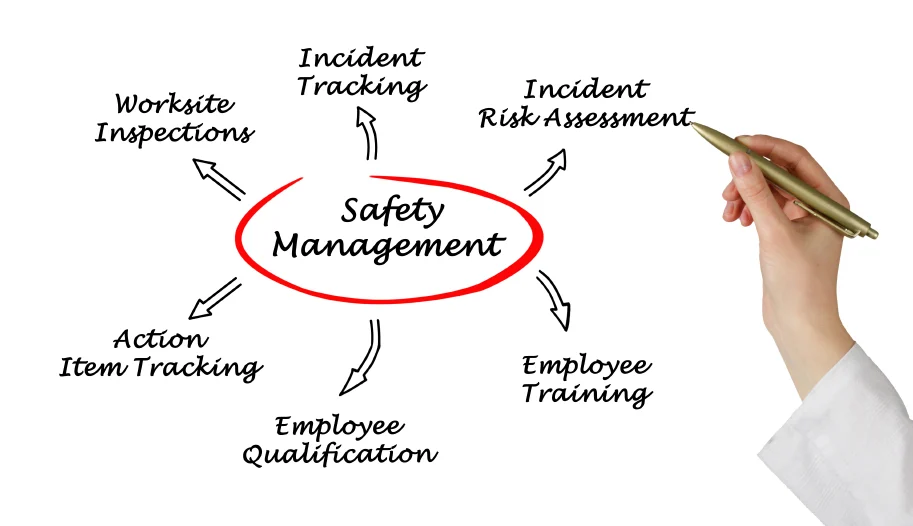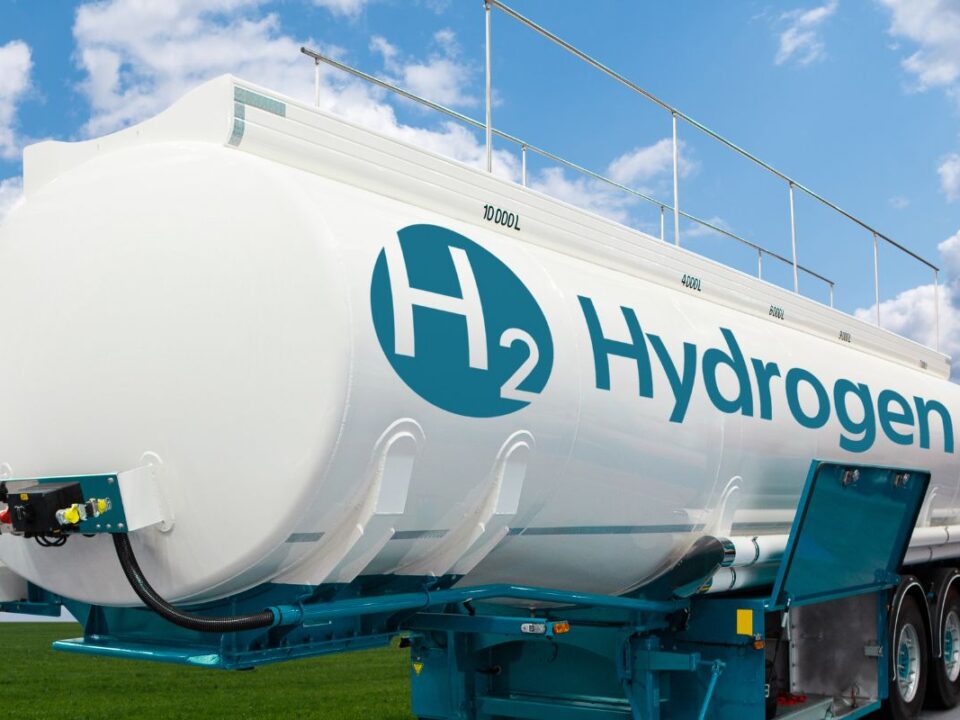The Ultimate Guide to Implementing an Effective Safety Management System: A Step-by-Step Approach

Compliance with BIS 14489 Safety Audit Guidelines: A Crucial Step towards Preventing Accidents and Injuries in Industries
October 6, 2023
Mitigating Operational Risks in India’s Process Industries: The Power of Quantitative Risk Analysis
October 7, 2023In this article, we delve into the realm of safety management systems, offering you a comprehensive guide on how to implement an effective one step-by-step. Safety in the workplace is not just a legal obligation but an essential aspect of creating a productive and secure environment for your employees. We understand the challenges that organizations face when it comes to establishing robust safety protocols, and that’s why we are here to help. From identifying potential hazards to designing preventive measures, we provide you with actionable insights and expert advice to ensure the utmost protection for everyone involved. Join us as we unlock the secrets to achieving a successful safety management system that truly works.
Introduction
Every organization, regardless of its size or industry, has a responsibility to ensure the safety and well-being of its employees. Implementing an effective safety management system is crucial in achieving this goal. However, navigating through the complexities of establishing such a system can be overwhelming. This comprehensive guide aims to provide you with a step-by-step approach to implementing an efficient safety management system. Throughout this article, we will delve into various aspects of safety management systems and explore techniques and strategies that can help you create a safe working environment for your employees. From conducting safety assessments and setting clear goals, to developing policies and procedures, we will cover all the essential steps necessary for successful implementation
Understanding Safety Management Systems
Safety management systems are the cornerstone of any successful organization, providing a structured approach to managing and mitigating risks. Understanding these systems is crucial for creating a safe and secure working environment. Safety management systems encompass a range of processes, procedures, and practices designed to identify potential hazards, assess risks, and implement effective control measures. By comprehending the underlying principles and components of such systems, businesses can foster a culture of safety that protects employees from harm while enhancing productivity. Within safety management systems, key elements include risk assessment, hazard identification, incident reporting mechanisms, emergency response protocols, and ongoing monitoring and evaluation. These elements work in tandem to ensure that potential dangers are identified proactively and appropriate interventions are implemented promptly. It is essential to recognize that safety management systems are not static; they require continuous improvement to adapt to changing circumstances or emerging risks.
By embracing the concept of safety management systems as integral parts of their organizations, leaders can cultivate an optimistic outlook within their workforce. Employees will feel empowered knowing that their well-being is prioritized through comprehensive safety measures. Ultimately, understanding the importance of safety management systems lays the foundation for building a harmonious workplace where individuals thrive both professionally and personally.
Conducting a Safety Assessment of the Organization
Efficiently assessing the safety standards of an organization is a critical step towards implementing an effective safety management system. It involves a comprehensive evaluation of various aspects, ranging from physical infrastructure to operational procedures. This process aims to identify potential hazards and deficiencies, ensuring that appropriate measures are taken to mitigate risks effectively. During the safety assessment, experts meticulously examine the workplace environment, machinery, equipment, and work processes. They conduct thorough inspections and audits to identify any potential dangers or non-compliance with safety regulations. By uncovering these areas of concern, organizations can proactively address them and create a safer working environment for their employees.
A thought-provoking reality is that by conducting regular safety assessments, organizations demonstrate their commitment to prioritizing the well-being of their workforce. By actively seeking out areas for improvement and taking prompt action, they not only reduce accidents but also foster a culture of safety within their organization. Remember: being proactive in identifying shortcomings today can prevent accidents tomorrow – making every day at work a step closer towards achieving a safer future for all involved.
Setting Clear Safety Goals and Objectives
Setting Clear Safety Goals and Objectives: In the pursuit of creating a safe work environment, setting clear safety goals and objectives is paramount. These goals act as guiding principles that shape the organization’s commitment to ensuring the well-being of its employees and stakeholders. To begin this process, it is crucial to conduct a thorough analysis of existing safety practices, identifying areas that require improvement.
One creative approach to setting safety goals is adopting the SMART framework – Specific, Measurable, Achievable, Relevant, and Time-bound. By aligning safety objectives with these criteria, organizations can articulate precise targets that are quantifiable and within reach. For instance, instead of setting a generic goal like “reduce accidents,” a SMART objective could be “decrease workplace accidents by 20% within six months through enhanced hazard identification and employee training.”
Additionally, it is essential to involve employees in establishing these goals and objectives. Encouraging their active participation fosters a sense of ownership and empowers them to contribute their unique perspectives towards creating a safer workplace. Such involvement not only boosts morale but also ensures that the set targets resonate with those who will be directly affected by them.
Remember, clear safety goals not only inspire confidence but also generate enthusiasm among employees as they actively work towards achieving them. The optimism derived from focusing on achievable objectives helps create an atmosphere where everyone feels motivated to prioritize safety without compromising productivity or job satisfaction.
Developing Safety Policies and Procedures
Developing Safety Policies and Procedures: In this crucial phase, organizations lay the foundation for a robust safety management system by creating comprehensive safety policies and procedures. These documents serve as a guide for employees, outlining the specific steps to be taken to ensure a safe working environment. Emphasizing clarity and simplicity, safety policies should be easily understood by all personnel, regardless of their level within the organization.
To create effective safety policies and procedures, it is essential to involve key stakeholders from various departments. This collaborative approach ensures that diverse perspectives are considered. The policies should address potential risks unique to the organization’s industry while adhering to industry best practices and legal requirements. By focusing on proactive measures rather than reactive ones, organizations can foster a culture of prevention rather than mere compliance.
The development of safety procedures requires meticulous attention to detail. Each procedure should outline step-by-step instructions for tasks such as equipment use and maintenance or emergency response protocols. Clear communication is paramount in ensuring that employees can effortlessly follow these procedures in real-life situations. By fostering a culture of accountability and empowering employees with knowledge, organizations can instill confidence in their workforce’s ability to handle any potential safety challenges that may arise
Establishing Roles and Responsibilities
Establishing Roles and Responsibilities: In order to ensure the smooth implementation of a safety management system, it is crucial to establish clear roles and responsibilities within the organization. This helps create a culture of accountability and promotes effective communication across all levels.
At the heart of any successful safety management system lies a team of dedicated individuals who understand their specific responsibilities in relation to safety. The first step in establishing these roles is to conduct a comprehensive assessment of the organization’s structure. This assessment will identify key personnel who will be responsible for overseeing various aspects of safety.
Once identified, these individuals should be provided with thorough training and education on their responsibilities, as well as any relevant regulations or industry best practices. It is essential that each person understands not only what they are responsible for but also why their role is crucial in maintaining a safe working environment.
To foster a positive atmosphere, organizations should encourage collaborative efforts among team members by promoting open communication channels. By encouraging employees to share ideas and concerns related to safety, organizations can tap into the collective wisdom of their workforce, leading to more innovative solutions and improved safety outcomes.
Remember, when everyone understands their roles and feels empowered to contribute to the overall safety goals, it creates a sense of unity and shared responsibility that can elevate an organization’s safety culture to new heights.
Implementing Effective Communication Strategies
Implementing Effective Communication Strategies: Clear and concise communication is the cornerstone of a successful safety management system. When it comes to ensuring a safe working environment, effective communication can make all the difference. It is essential to establish channels that facilitate the flow of information between employees, managers, and stakeholders.
One vital aspect of effective communication is using various platforms to disseminate safety-related information. This can include regular safety meetings, bulletin boards displaying important updates, and even digital platforms for quick dissemination of critical alerts. By utilizing a combination of these methods, organizations can ensure that their workforce remains well-informed about potential hazards, new protocols, and safety initiatives.
Furthermore, fostering an open-door policy encourages employees to communicate safety concerns without fear or hesitation. Creating an environment where individuals feel comfortable speaking up about potential risks leads to early identification and mitigation of hazards. Active listening by management ensures that concerns are addressed promptly and reinforces trust among team members.
By implementing these effective communication strategies throughout an organization, businesses can foster a culture of safety awareness and collaboration. This proactive approach not only enhances overall occupational health but also boosts employee morale and productivity—ultimately creating a harmonious work environment where everyone feels valued and invested in maintaining a safe workplace.
Providing Safety Training and Education
Providing Safety Training and Education: One of the crucial components of implementing an effective safety management system is ensuring that employees receive comprehensive safety training and education. By investing in their knowledge and skills, organizations can empower their workforce to proactively identify hazards, mitigate risks, and contribute to a culture of safety.
The training process should begin with a thorough assessment of the specific training needs within the organization. This includes identifying potential risks, evaluating job roles, and determining the appropriate level of training for each employee. Once these needs are identified, a tailored training program can be developed, encompassing both general safety principles and job-specific requirements.
To make the training engaging and impactful, it is essential to incorporate diverse instructional methods such as interactive workshops, hands-on demonstrations, simulations, and multimedia presentations. Additionally, integrating real-life case studies or success stories can help employees understand the practical applications of safety practices in their daily work.
Organizations should also emphasize continuous learning by offering refresher courses periodically to reinforce key concepts and stay up-to-date with new regulations or industry advancements. By fostering a learning environment that encourages knowledge sharing and ongoing development, companies can ensure that safety remains at the forefront of their operations.
Remember: Safety training is not just about complying with regulations; it is an investment in your employees’ well-being and organizational success. Empowering them with proper education will not only reduce accidents but also enhance productivity and morale within your workforce.
Conducting Safety Audits and Inspections
Conducting Safety Audits and Inspections: Nurturing a culture of safety within an organization involves regular assessments to identify potential hazards. Safety audits serve as a meticulous scrutiny of safety procedures, equipment, and practices. By objectively evaluating these aspects, organizations can proactively address weaknesses and improve overall safety performance.
During inspections, each corner of the workplace is meticulously examined to ensure compliance with safety regulations. Inspectors keenly observe the condition of machinery, adequacy of protective gear, and adherence to established protocols. Identifying areas for improvement not only enhances safety but also fosters employee morale, creating an atmosphere where individuals feel valued and protected.
Amidst these audits and inspections lies an opportunity for positive growth. Embracing the mindset that these activities contribute to a safer work environment instills confidence in employees while fostering a sense of collective responsibility. When potential hazards are identified and corrected promptly, it demonstrates an unwavering commitment towards ensuring the well-being of every member within the organization
Reporting and Investigating Incidents
Reporting and Investigating Incidents: Incidents, though regrettable, impart invaluable lessons that can enhance safety measures. Promptly reporting all incidents is fundamental to maintaining a secure work environment. Encourage employees to submit comprehensive incident reports, including detailed descriptions of the event and any contributing factors. This not only facilitates a thorough investigation but also helps identify patterns or trends for proactive prevention. By fostering a culture of open communication and trust, organizations create an atmosphere where incidents are seen as opportunities for growth rather than sources of blame.
Upon receiving incident reports, initiate investigations promptly to uncover root causes and develop effective corrective actions. A systematic approach should be followed, involving gathering evidence through interviews, examining physical evidence, and analyzing relevant documentation. A multidisciplinary team can provide diverse insights into the incident while maintaining objectivity throughout the investigation process. Remember, the primary goal is not to assign blame but rather to identify weaknesses in safety procedures and implement improvements that will prevent future incidents.
In addition to investigating individual incidents, it is essential to track and analyze data on incidents over time. This enables organizations to spot emerging trends or recurring issues that may require targeted interventions. By utilizing advanced data analysis techniques such as trend analysis or predictive modeling, organizations can proactively identify potential hazards before they escalate into significant incidents. Regularly review incident reports and share findings with employees transparently to foster a collective commitment towards continuous improvement in safety practices.
By reporting incidents promptly, conducting thorough investigations, and analyzing incident data strategically, organizations can cultivate an optimistic safety culture focused on learning from mistakes rather than dwelling on them. Through this proactive approach towards incident management, workplaces become safer environments where employees feel empowered to speak up about potential risks while having confidence in the organization’s commitment towards their well-being.
Continuous Improvement and Review
Continuous Improvement and Review: Once the safety management system is implemented, the journey towards excellence doesn’t end there. To ensure ongoing effectiveness, continuous improvement and regular review are paramount. This phase allows organizations to refine their processes, identify areas for enhancement, and adapt to changing safety requirements.
During the continuous improvement process, it is crucial to foster a culture of learning and innovation. Encouraging employees at all levels to share their insights, ideas, and suggestions empowers them to contribute actively towards enhancing safety practices. By embracing a collective effort for improvement, organizations can harness the full potential of their workforce.
Regular review of safety management systems helps identify performance gaps and streamline processes accordingly. Analyzing data collected from audits, incident reports, and employee feedback provides valuable insights into emerging trends or recurring issues that need attention. With each iteration of review and refinement, organizations edge closer towards establishing a robust safety framework that protects employees and ensures compliance with industry standards.
Remember: The pursuit of continuous improvement instills an optimistic outlook within an organization. It demonstrates a commitment to growth and success while fostering a sense of confidence among stakeholders in the organization’s safety efforts. Embrace the journey towards excellence by continually reviewing your safety management system – it’s an investment that yields long-term rewards for all involved.
Conclusion
In the realm of safety management, implementing an effective system is paramount to protecting lives and ensuring a secure working environment. By following this comprehensive step-by-step approach, organizations can lay a sturdy foundation for their safety management system. With clear goals, well-defined procedures, and a commitment to continuous improvement, you can create a culture of safety that permeates every aspect of your organization. Remember, the journey towards safety excellence is ongoing, but with dedication and perseverance, it is an attainable goal that will bring peace of mind to all stakeholders involved.




